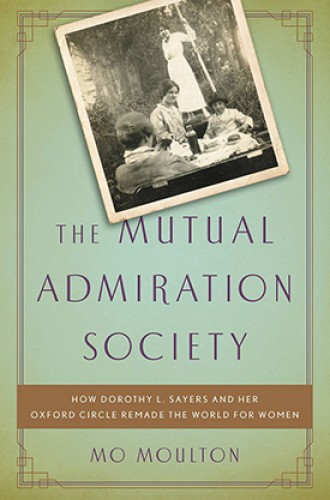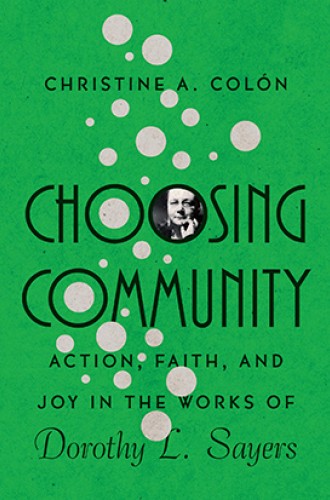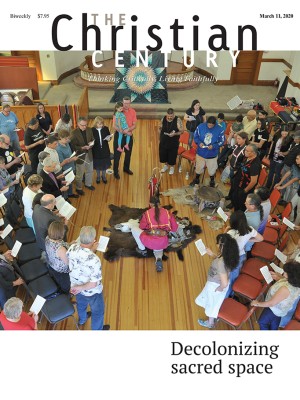In Mo Moulton’s ambitious yet intimate book, at least a half dozen contemporaries of Dorothy L. Sayers emerge as figures who are as fascinating as the novelist, translator, and playwright was herself. Moulton, who teaches history at the University of Birmingham, spent nearly five years combing archives across England and the United States to round out the previously sketchy portraits of these women, most of whom appear as mere walk-ons in Sayers biographies.
Although several of these women surely deserve full-length biographies of their own, The Mutual Admiration Society celebrates collaboration rather than star performances. In describing their collective contributions to the fields of education, health care, politics, the arts, and literature, Moulton also shines the spotlight on their various forms of sexual expression. Although this element may make the book seem especially relevant today, even more timely is its articulation of the MAS’s shared political and cultural vision.
Read our latest issue or browse back issues.
The book opens with a glimpse of the group’s inaugural members—Sayers, Charis Barnett, Muriel St. Clare Byrne, and Dorothy Rowe (“D. Rowe”)—conversing over cocoa early in their time at Oxford University’s Somerville College. The group expands, and Moulton vividly writes about each woman’s social, religious, and economic background, conjuring up not only the rigor of their academic environment but also the sense of fun they enjoyed. Accounts of ghost story-telling sessions, practical jokes, stage plays, and romantic crushes (some on each other) endear the characters to us even as we marvel at their vast capacity for intellectual engagement.
Moulton’s descriptions of the toll of two world wars draw us further into the women’s circle. As the women’s griefs accumulated, their bonds of affection provided a supportive structure that enabled them not only to withstand personal and national tragedy but also to become significant contributors to English political and cultural life. While epistolary excerpts evince that their friendship was its own reward, Moulton also shows how their collaborations enabled each of the women to accomplish more than she otherwise would have.
Barnett, the author of authoritative parenting guides as well as two books on Latin pedagogy and an autobiography, drew from her wartime service in midwifery to establish maternal health clinics that provided family planning support for poor women. Her involvement in local politics eventually resulted in an invitation to run for Parliament. Rowe became an exacting and beloved high school teacher, illustrated Barnett’s Latin books, worked with Sayers on a screenplay and with Byrne on an educational filmstrip series, and led her local theater troupe to national prominence.
Byrne, although unsuccessful in pursuing a full-time academic career, claimed the Most Excellent Order of the British Empire for her scholarship on Elizabethan England. She also found time to collaborate with Sayers on the play Busman’s Honeymoon and a book series, Bridgeheads, which offered counsel during World War II on building a better society. Byrne’s life partner, Marjorie Barber (“Bar,” another Somerville grad), also became an accomplished educator and editor. She contributed significantly to Busman’s Honeymoon, and a trip she took with Sayers to Venice in 1937 resulted in the latter’s writing the biting and delightful play Love All.
That Moulton devotes only one sentence to Love All is unfortunate, as that play’s celebration of friendship among creative women is symbolic of the joyful collaborations Moulton explores so effectively. The ink Moulton saves here gets used elsewhere to detail the MAS members’ domestic relationships—especially Byrne’s with Bar, complicated by Byrne’s long involvement with another Somerville alumna. While devoting considerable attention to this love triangle, Moulton also looks more broadly at long-term female partnerships of the period that readers today might consider polyamorous.
By Moulton’s account, only Barnett’s marriage to Sydney Frankenburg seems conventionally heterosexual. Rowe remained single; Sayers, who bore a son before marrying later in life, often dressed in masculine attire; Byrne presented herself similarly and lived in partnership with Bar. “In some respects,” Moulton observes, “it would be possible to argue that they each lived a queer life, in that they refused neat categories and pushed beyond the boundaries of feminine womanhood in twentieth-century Britain.”
What Sayers would say to this assessment can only be imagined. Moulton acknowledges the existence of a predatory lesbian villain at the center of Sayers’s Unnatural Death and notes Sayers’s confession to Dr. Eustace Barton, her coauthor on Documents in the Case, that “inverts make me creep.” Moulton concludes, however, that Sayers’s view shifted, citing her abiding friendships with Byrne and Bar as well as the introduction in later mystery novels of female characters who live together as roommates and perhaps lovers.
Above all, Moulton demonstrates that the MAS was a network of shared purpose—an idea that should resonate with readers today. Sayers and her friends agonized over “how to vanquish the specter of mass democracy wrenched toward fascism.” Their answer was to insist that “vibrant, organic culture only thrived in a society that thoroughly integrated its highest culture with the full range of its population.”
Taking advantage of the democratization of culture that enabled them to claim Oxford degrees, the members of the MAS endeavored to make the best ideas accessible to all. One memorable example is Sayers’s WWII-era BBC radio play cycle about the life of Christ, The Man Born to Be King, which enjoyed both wide popularity and critical acclaim.
Moulton writes respectfully about Sayers’s Christian conviction but ultimately characterizes it a “deeply pessimistic” aspect of her worldview. After briefly summarizing Sayers’s trinitarian views and largely dismissing her commitment to the church, Moulton asks, “What, finally, is the point of bringing the best ideas to people, if we are ultimately so essentially wicked that we will murder transcendent goodness if it’s put in front of us?” The Mutual Admiration Society thus concludes in a minor key. Friendship, meaningful work, and intellectual integrity become the consolation prizes in a world without a resurrected Christ.
These three values also lie near the heart of Christine Colón’s Choosing Community, published a month before The Mutual Admiration Society. Considerably shorter and less academic than Moulton’s book, Colón’s complements it well. Adapted from Colón’s 2017–18 Hansen Lectures at Wheaton College, the book alternates artfully constructed chapters on action, faith, and joy with intriguing responses by colleagues Tiffany Eberle Kriner (English), Andy Mangin (theater), and Bryan T. McGraw (politics and international relations). Colón’s project thus embodies the kind of collaboration Sayers savored.
Colón views Sayers’s life’s work more hopefully than Moulton does. Colón draws from Sayers’s later plays and writings on vocation to underscore Sayers’s conviction that humans can participate in God’s redeeming purposes. Sayers believes, writes Colón, that “despite their flaws, communities may come together not only to affirm truth but also to help bring others to faith. As she continually demonstrates, however, this hope must ultimately be founded on God and not simply on human work.” Colón’s familiarity with the Christian doctrines Sayers insisted were so important equips her to illuminate aspects of Sayers’s thought that elude Moulton.
In a fine chapter that concludes Colón’s book, McGraw challenges readers to foster civic friendship. Sayers’s writing, he suggests, helps us see that all people are “creatures lovingly made in the image of God, possessing an inviolate dignity, and fellow participants in the always imperfect, often fractious and even tragic, effort to forge a common life here together.”
Despite their different aims and tones, both books invite readers to follow Sayers and her friends in using our intellectual and social power to engage culture during dark days. Whether we consider the members of the Mutual Admiration Society through Colón and her colleagues’ Christian lenses or from Moulton’s less theologically inflected perspective, we will find in them much to admire and to emulate.
A version of this article appears in the print edition under the title “Sayers in community.”








